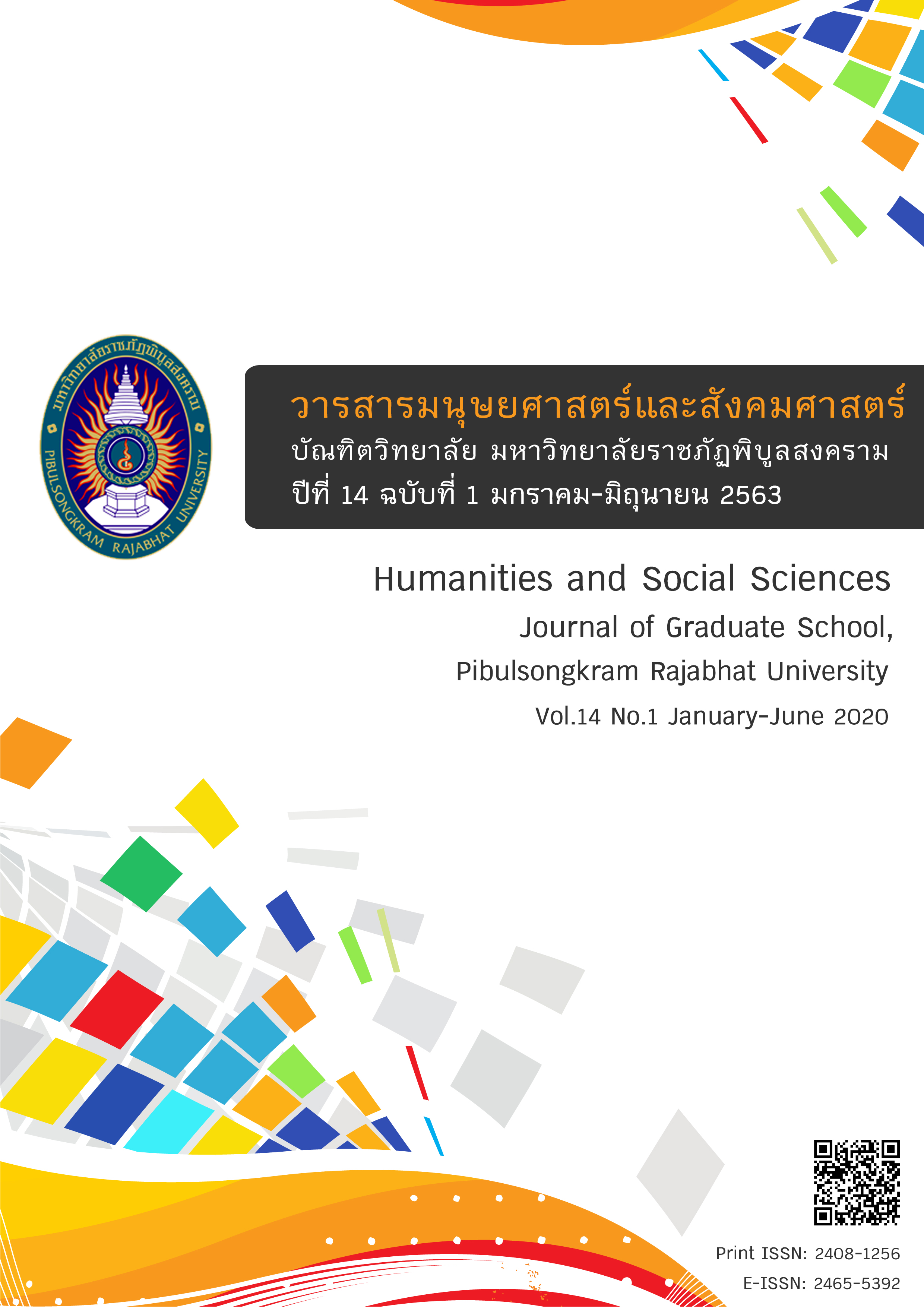Undergraduates’ Ability to Identify the English Liquids /r/ and /l/ at Word-Initial
Keywords:
Initial consonants, Initial liquids, Phonological aspects, Listening abilityAbstract
A good listening ability helps the listener to comprehensively obtain information while conversing with their interlocutor, and it also enhances successful communication. Contrastively, misunderstanding and misinterpretation of the received messages due to the lack of a good listening ability causes communication breakdowns. A poor English listening ability may be resulted from learners’ incapability to distinguish certain sounds that share some phonological aspects such as the liquids /r/ and /l/. Consequently, this research was conducted to investigate the English as Foreign Language (EFL) undergraduates’ ability to identify the English liquids /r/ and /l/ at word-initial. The participants were 60 freshmen who took the “GEBLC101: English for Everyday Communication” course in the first semester in the Academic Year 2018 at Rajamangala University of Technology Lanna (RMUTL) Phitsanulok, and they were purposively selected. The research instruments were a listening test and a questionnaire asking for the participants’ personal information. The listening test contained 40 randomly-organized minimal-pair English words with 20 words starting with the liquid /r/ and 20 words starting with the liquid /l/. The obtained data were statistically analyzed to find the mean score and percentage. The results of the study revealed that, overall, the participants could correctly identify the initial liquid /r/ and /l/. When further studied the ability to identify the liquids /r/ and /l/ at word-initial of the participants from each faculty, it found that the percentages of the Business Administration and Liberal Arts (BALA) (66%) and Science and Agricultural Technology (SAT) (64.25%) participants who correctly identify the initial liquid /r/ were nearly the same. The Engineering (ENG) participants showed the lowest ability to correctly identify the same sound with a percentage of 59.75%. The percentages of the BALA (55.25%), SAT (46%), and ENG (50.35%) participants who correctly identified the initial liquid /l/ were slightly different. It could be concluded that undergraduates from RMUTL Phitsanulok demonstrate a fairly good ability to identify the initial liquids /r/ and /l/; however, some participants could not perform the identification task well. It is recommended that EFL lecturers put more effort to encourage EFL undergraduates to do more listening practices, so their sound segment identification ability will be improved and their listening comprehension ability will, in turn, be better.
References
Akmajian, A., Demo, R. A., Farmer, A. K., & Harnish, R. M. (2001). Linguistics: an introduction to language and communication. Cambridge: MIT Press.
Al-Zoubi, S. M. (2018). The impact of exposure to English language on language acquisition. Journal of Applied Linguistics and Language Research, 5(4), 151-162.
Cambridge University Press. (2018). Cambridge dictionary online. Retrieved Available at: https://dictionary.cambridge.org/us/dictionary/
Darcy, I. (2018). Powerful and effective pronunciation instruction: how can we achieve it?. The CATESOL Journal, 30(1), 13-45.
Fryer, L. K. (2005). Minimal pair card game for improving pronunciation and listening. The Internet TESL Journal, 11(9), 1-8.
Haghighi, M., & Rahimy, R. (2017). The effect of L2 minimal pairs practice on Iranian intermediate EFL learners’ pronunciation accuracy. International Journal of Research in English Education, 2(1), 42-48.
Islam, J., & Bari, I. S. (2012). Implementation of CLT in Bangladesh and Thailand: problems and challenges. Outlooks: VUB, 2(1), 87-105.
Jenkins, J. (2000). The phonology of English as an international language. Shanghai: Oxford University Press.
Kanokpermpoon, M. (2007). Thai and English consonantal sounds: a problem or a potential for EFL learning?. ABAC Journal, 27(1), 57-66.
Ketkumbonk, A., & Woragittanont, I. (2017). The use of minimal pairs to develop Thai students’ abilities to produce English consonant sounds. College of Asian Scholars Journal, 7, 361-371.
Khamkhien, A. (2010). Thai learners’ English pronunciation competence: lesson learned from word stress assignment. Journal of Language Teaching and Research, 1(6), 757-764.
Kwon, Y. (2017). A study of Thai teachers’ perceptions toward implementation of communicative language teaching of English. HRD Journal, 8(1), 114-125.
Noom-ura, S. (2013). English-teaching problems in Thailand and Thai teachers’ professional development needs. English Language Teaching, 6(11), 139-147.
Nunan, D. (2002). The impact of English as a global language: policy and planning in Greater China. Hong Kong Journal of Applied Linguistics, 7(1), 1-15.
Özdener, N., & Eşfer, S. (2009). A comparative study on the use of information technologies in the development of students’ ability to comprehend what they listen to and watch. International Journal of Human Sciences, 6(2), 275-291.
Peters, E., & Leuven, K. (2018). The effect of out-of-class exposure to English language media on learners’ vocabulary knowledge. ITL-International Journal of Applied Linguistics, 169(1), 142-168.
Roach, P. (2009). English phonetics and phonology: a practical course (4th ed.). Cambridge: Cambridge University Press.
Sariçoban, A., & Kuç, A. (2010). Teaching problematic consonants in English to young learners. Procedia Social and Behavioral Sciences, 2, 943-947.
Tuan, L. T. (2010). Teaching English discrete sounds through minimal pairs. Journal of Language Teaching and Research, 1(5), 540-561.
Ulla, M. B. (2018). English language teaching in Thailand: Filipino teachers’ experiences and perspectives. Issues in Educational Research, 28(4), 1080-1094.
Yule, G. (2010). The study of language (4th ed.). New York: Cambridge University Press.
Downloads
Published
How to Cite
Issue
Section
License
Any articles or comments appearing in the Journal of Humanities and Social Sciences, Rajabhat Phibulsongkram University, are the intellectual property of the authors, and do not necessarily reflect the views of the editorial board. Published articles are copyrighted by the Journal of Humanities and Social Sciences, Rajabhat Phibulsongkram University.









